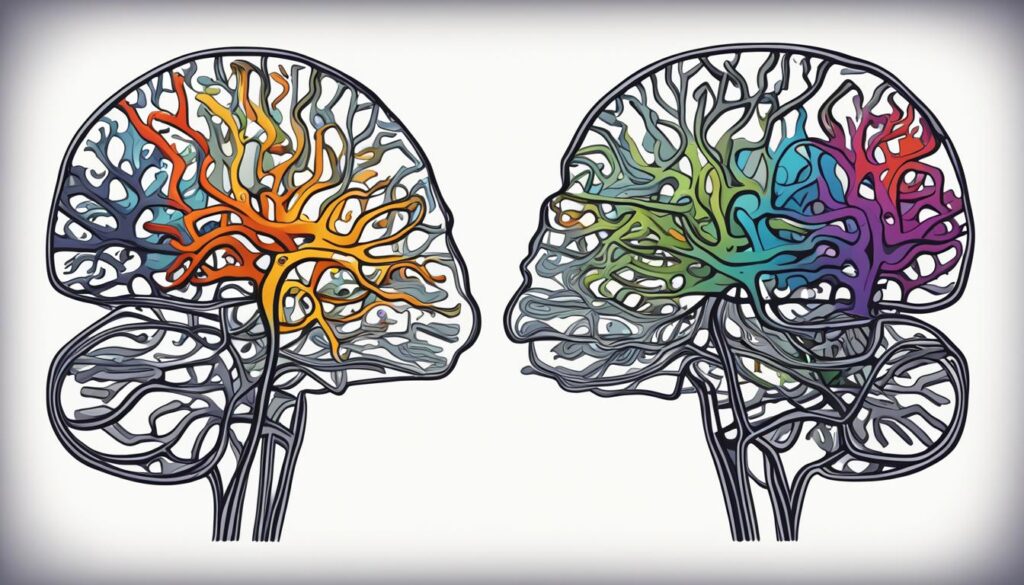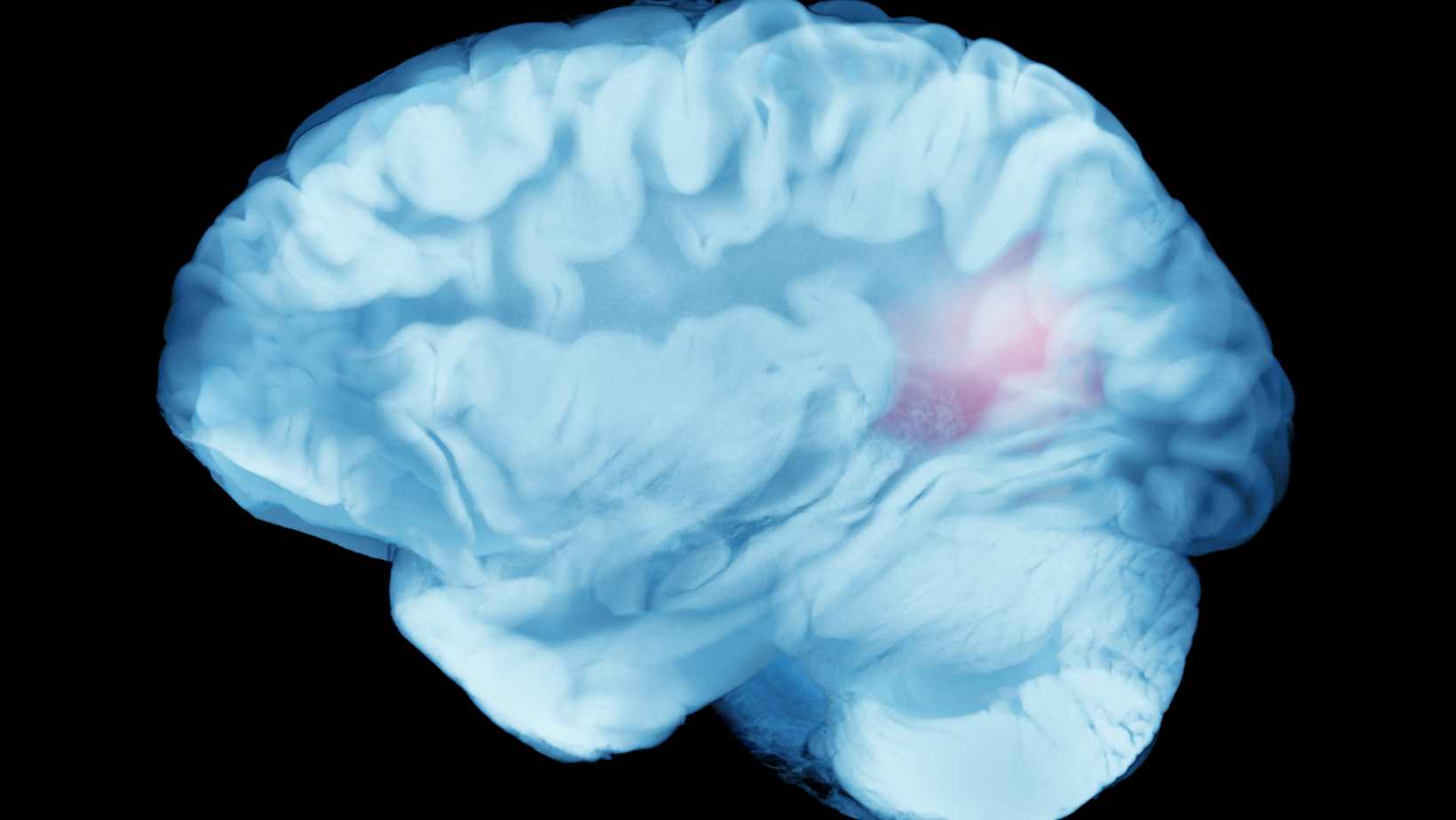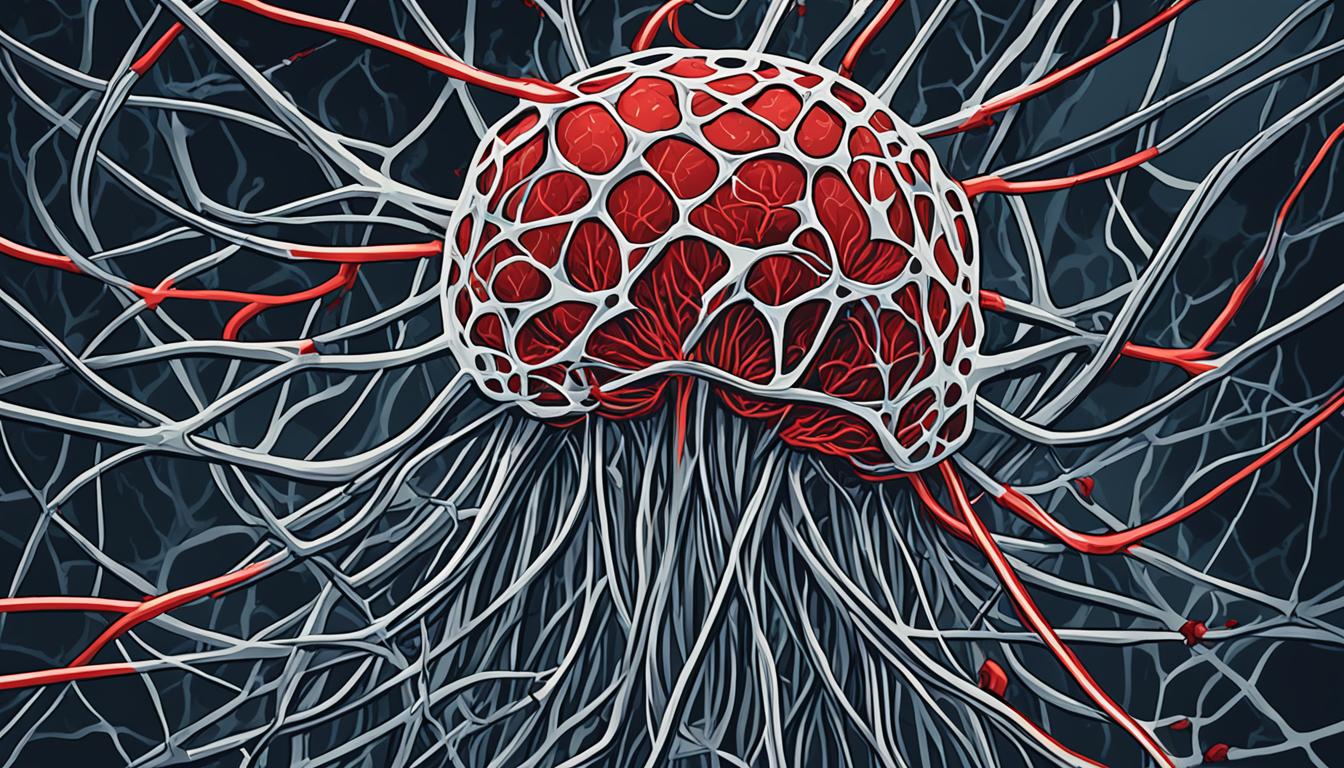Gerstmann-Sträussler-Scheinker (GSS) syndrome is very rare. It is an inherited brain disorder. The cause is a mutation in the prion protein gene (PRNP). This disorder is part of a group including Creutzfeldt-Jakob disease and fatal familial insomnia. These are all transmissible spongiform encephalopathies.
GSS is known for causing a loss of muscle coordination. It also leads to problems with thinking. The disease slowly gets worse over time. People with GSS usually live between 2 to 10 years after symptoms appear.
Table of Contents
ToggleWhat is Gerstmann Sträussler Scheinker Syndrome?
Gerstmann-Sträussler-Scheinker (GSS) syndrome is very rare. It’s inherited and affects the brain. A mutation in the prion protein gene (PRNP) causes it. This disease is a type of transmissible spongiform encephalopathy (TSE).
Rare Neurodegenerative Brain Disorder
GSS is a very rare rare prion disease that impacts the brain. It’s caused by a genetic mutation, making it inherited brain disorder. This makes it a familial prion disease.
Inherited and Found in Few Families Worldwide
It’s found in only a few families across the globe. This is because it is an inherited condition. Children have a 50% chance of getting it if a parent carries the genetic mutation.
Typical Age of Onset
GSS usually starts between the ages of 35 and 55. The average age of getting GSS is in the mid-40s.
Early Symptoms of Gerstmann Sträussler Scheinker Syndrome
In the beginning, ataxia is a main symptom. It causes a lack of muscle coordination. People may seem clumsy, have trouble walking, and not be steady. This problem happens more as the disease gets worse. It makes daily life harder for those with GSS.
Ataxia and Loss of Muscle Coordination
In the start, a person might have trouble moving correctly. This is called ataxia. It can show as an unsteady walk or trouble keeping balance. Doing small tasks with the hands may also become difficult. As GSS continues, these problems get worse. This makes it harder to do everyday things.
Clumsiness and Difficulty Walking
Early on, people with GSS might be clumsy. They might trip a lot or feel uncoordinated. This affects how they can move and do things on their own. Losing the ability to control muscles well is a common sign.

Progression of Gerstmann Sträussler Scheinker Syndrome
Gerstmann-Sträussler-Scheinker (GSS) syndrome gets worse over time. People with GSS face a growing inability to control their muscles. They often develop dementia, a mental condition that gets worse, affecting thinking and daily life.
Worsening Ataxia and Dementia Development
Ataxia, or lack of muscle coordination, is a key sign of GSS. It gets more severe with time, making balance and moving tough. Dementia also starts to appear, leading to confusion and memory loss. This makes day-to-day tasks harder.
Additional Symptoms
Beyond ataxia and dementia, GSS can cause other serious issues. These include trouble speaking, rapid eye movements, stiff muscles, and vision problems. Some might even go blind or deaf.
Rapid Eye Movements and Visual Disturbances
Nystagmus, or fast, uncontrolled eye movements, is a standout symptom of GSS. This can make seeing hard, causing blurry or double vision. These eye problems can make the disease’s effects even harder to manage.
Gerstmann Sträussler Scheinker syndrome
Gerstmann-Sträussler-Scheinker (GSS) syndrome is a type of TSE. It’s a rare and deadly brain disorder. GSS, like Creutzfeldt-Jakob disease and fatal familial insomnia, is caused by weird prion proteins.
Transmissible Spongiform Encephalopathy
GSS is in the TSE family. This family includes Creutzfeldt-Jakob disease, kuru, and fatal familial insomnia. These diseases are because of wrongly folding prion proteins. They make holes in the brain over time.
Related to Creutzfeldt-Jakob Disease and Fatal Familial Insomnia
GSS happens when prion proteins fold wrongly in the brain. You can get it from infected tissue or fluids. Even though it looks like Creutzfeldt-Jakob and fatal familial insomnia in some ways, they each have their distinct features.

Diagnosis and Treatment Options
GSS syndrome is found by looking at your symptoms and family history. Doctors also do a genetic test. This test checks for a PRNP gene mutation to confirm GSS.
Genetic Testing for Confirmation
Your doctor might suggest testing if GSS is suspected. This test looks for certain genetic mutations in your DNA. Finding a PRNP gene mutation confirms you have GSS.
No Cure or Treatment to Slow Progression
There is no cure or way to slow down GSS yet. It’s very hard to treat because it’s rare and complex. Sadly, GSS is fatal. There’s no treatment to stop it.
Symptom Management and Supportive Care
Care for GSS focuses on managing symptoms and giving support. This includes physical and speech therapy. Also, there are medications for problems like memory loss. The aim is to keep you as comfortable as possible.
Prognosis and Life Expectancy
Gerstmann-Sträussler-Scheinker (GSS) syndrome moves slowly. People with GSS usually live 2 to 10 years after symptoms start. Unfortunately, GSS leads to severe disability and death in this time.
Slowly Progressive Disease Course
GSS’s course is slow, unlike some prion diseases. It takes 2 to 10 years to become fatal from the start of symptoms.
Typically Fatal Within 2-10 Years
For those with GSS, life expectancy is about 2 to 10 years after showing symptoms. GSS is slower than other prion diseases but still leads to death. Most patients die within this time, showing how serious GSS is.
Clinical Trials and Research
GSS syndrome is very rare, so joining in clinical trials and research is key. These studies can help find new treatments. Right now, treatments just help with the symptoms of GSS. So, these studies are a big hope for people and families facing this disease.
Importance of Participation
Being part of GSS clinical trials and research matters a lot. They need volunteers of every age, gender, race, and culture. This makes sure the findings truly represent everyone with GSS. By joining these studies, you help move science forward. You might also make life better for those with GSS.
Current Studies and Recruitment
Families and patients should look into the current studies. These are looking for people with GSS. They are important for learning more about the disease and finding new ways to treat it. Your part in these studies can truly impact the lives of those with GSS.
Conclusion
Gerstmann-Sträussler-Scheinker (GSS) syndrome is a very rare brain disorder. It’s inherited and caused by a gene change. People with GSS have trouble with their balance and movement. They also find it hard to think. Sadly, GSS leads to severe problems and can be deadly in 2-10 years.
GSS doesn’t have a cure yet. But, scientists are working hard to learn more. They want to find better ways to help people with GSS in the future. Research and clinical trials are very important to do this.
About 1-10 people in 100 million have GSS. It usually shows up when they are 40-60 years old. There are many different gene changes that can cause GSS. This makes the disease look different from other brain disorders.
There is no cure for GSS at the moment. But, taking part in research can make a big difference. You can help find new ways to help people with GSS. Remember to keep up with the latest news in GSS research. Talk to your doctors to get the best care possible.
FAQ
What is Gerstmann-Sträussler-Scheinker (GSS) syndrome?
GSS syndrome is very rare and runs in families. It’s a brain disease due to a wrong gene. It’s like other brain diseases such as Creutzfeldt-Jakob and fatal familial insomnia.
What are the early symptoms of GSS syndrome?
At first, you might not move right. This leads to feeling clumsy, like you can’t walk straight. This is called ataxia and is a big sign of GSS.
How does GSS syndrome progress over time?
Over time, moving and thinking get harder. People might also find talking, seeing, and hearing tough. GSS leads to a lot of problems as it moves on.
What is the relationship between GSS syndrome and other prion diseases?
GSS is part of a rare group of brain diseases. It’s linked to others like Creutzfeldt-Jakob and fatal familial insomnia. They all come from wrong proteins in the brain.
How is GSS syndrome diagnosed and treated?
Doctors use symptoms, family past, and tests to diagnose GSS. Sadly, there’s no cure. Care involves therapy and medicine for symptoms like ataxia and dementia.
What is the prognosis and life expectancy for individuals with GSS syndrome?
GSS gets worse slowly. People usually live 2 to 10 years after symptoms start. It often becomes deadly within this time.
How can individuals with GSS syndrome participate in research and clinical trials?
With GSS being so rare, joining studies is important. This helps find better care and maybe a cure. People should look into existing studies for GSS.
Source Links
- https://www.ninds.nih.gov/health-information/disorders/gerstmann-straussler-scheinker-disease
- https://en.wikipedia.org/wiki/Gerstmann–Sträussler–Scheinker_syndrome
- https://clinicalmovementdisorders.biomedcentral.com/articles/10.1186/s40734-019-0082-1
- https://www.ncbi.nlm.nih.gov/pmc/articles/PMC6700593/
- https://www.ncbi.nlm.nih.gov/pmc/articles/PMC8078271/
- https://www.ncbi.nlm.nih.gov/pmc/articles/PMC10265248/
- https://www.sciencedirect.com/topics/neuroscience/gerstmann-straussler-scheinker-syndrome
- https://www.ncbi.nlm.nih.gov/pmc/articles/PMC6369391/
- https://www.mrcctu.ucl.ac.uk/studies/all-studies/p/prion-1/
- https://www.ncbi.nlm.nih.gov/pmc/articles/PMC6907140/

This article is medically reviewed by Dr. Chandril Chugh, Board-Certified Neurologist, providing expert insights and reliable health information.
→ Book a consultation to discover which remedies suit your needs best.
About Author | Instagram | YouTube | Linkedin




